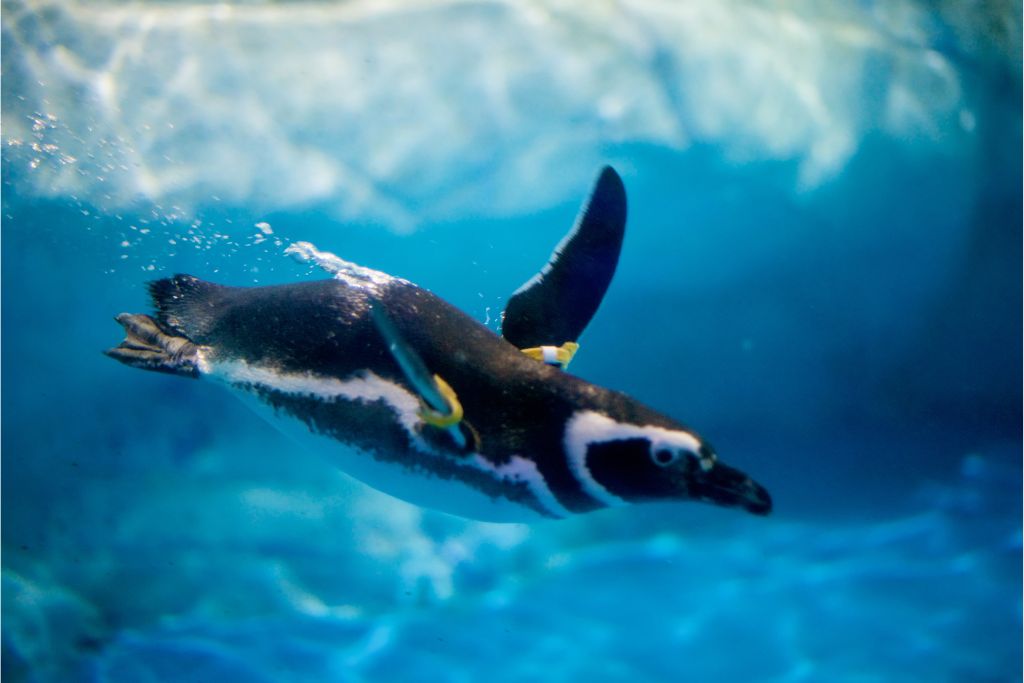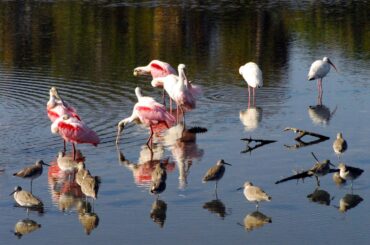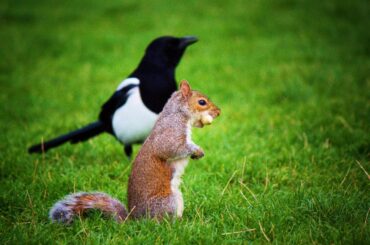How can you classify penguins? Can you consider them birds or not? What do you think are the reasons penguins are classified as distinct from other avian species?
People nowadays are interested in and have a different outlook on classifying penguins as birds. Despite their obvious similarities to mammals, penguins were once misclassified as reptiles rather than birds. Let’s dive into this topic as we progress through our article.
Penguins are called “flightless birds of the sea” because they thrive in the icy waters of the Southern Hemisphere instead of flying in the sky. This is a true testament to nature’s endless possibilities and creativity. Prepare to be amazed by the world of these charismatic birds, primarily seen in the sea.
What Is a Penguin Classified As?
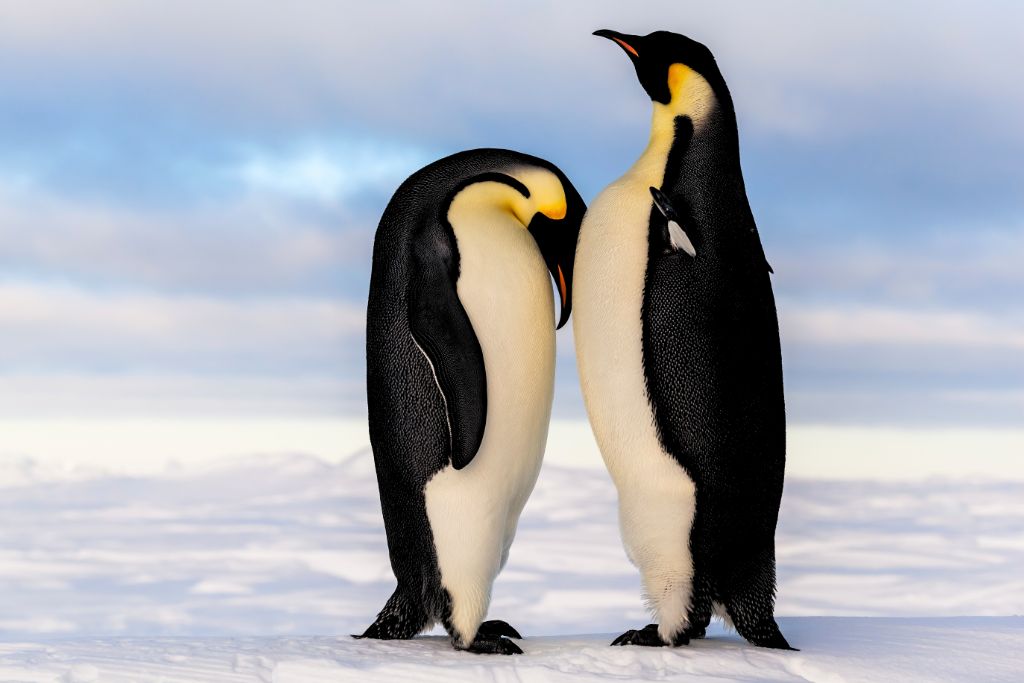
Birds are known to possess feathers used to shield and aid in flight. This is one of the unique features that make them stand out and be classified as birds. They are known as being “endothermic,” or able to regulate body temperature to survive in various environments.
Given the characteristics of birds, penguins are often the subject of debate among scientists and enthusiasts in the field. This is due to their distinct features, such as being flightless and adapting to aquatic life.
Despite being adaptable and flightless, Penguins still have what it takes to be birds. Because they still have standard traits like feathers, beaks, and endothermic bodies, just like the original species.
Taxonomic Classification
Did you know penguins belong to the class Aves? They are classified under the sub-class Spheniscidae, which comprises all known penguin species. They possess several taxonomic characteristics that distinguish them from other avian animals.
Penguins have flippers instead of wings for swimming and diving. Their ability to adapt to water paved the way for scientists to call them “Sphenisciformes.” Others also call them “Pelecaniformes,” which include pelicans and cormorants.
Taxonomists constantly argue whether penguins should be put in a different order or added to an existing one. This instance shows that specialized animals like penguins are hard to classify, as it is hard to find balance, given that different animals have various ways of adapting to ecological environments.
Species
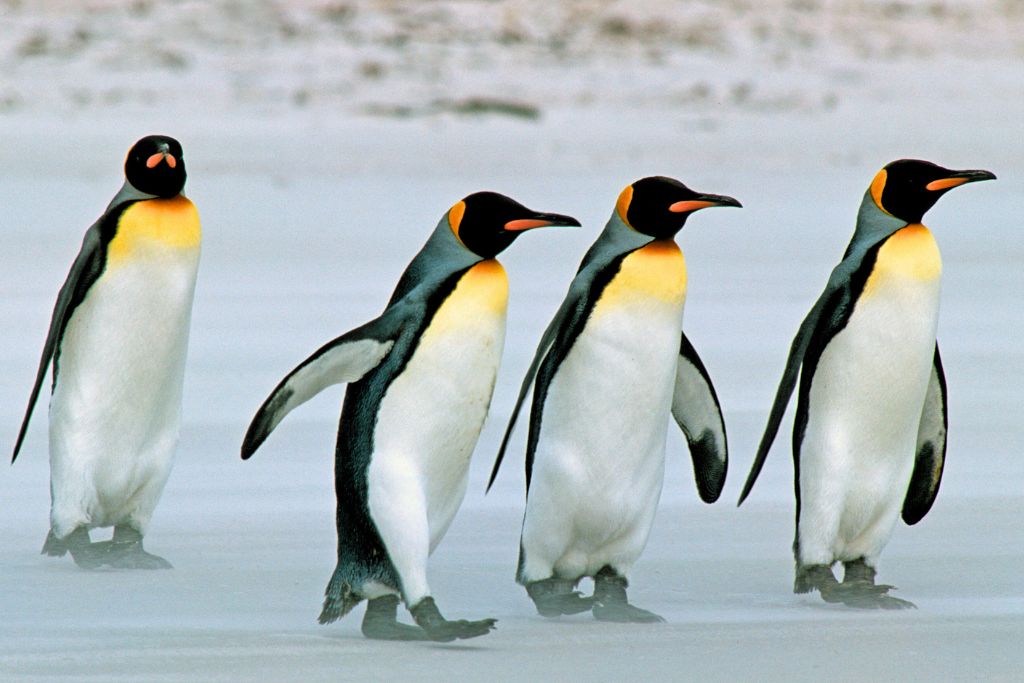
Penguins are unique and considered highly adapted birds in the Southern Hemisphere. Various species of penguins differ in size, behavior, and habitat, making them a remarkable group of birds. Let’s explore penguin birds and their seventeen distinct species.
- Emperor Penguin: These penguins can survive in the Antarctic environment. The largest species of penguin possesses striking black-and-white looks.
- King Penguin: A regal penguin with bright orange patches on its head and neck, they are known to be the second-largest penguin species.
- Adélie Penguin: Lively and curious behavior sets them apart. They also have unique features like a white ring around the eyes and a tuxedo-like black-and-white appearance.
- Gentoo Penguin: They are easily spotted due to their bright orange-red bill and white stripes across their head. A lot of people have seen them in the Southern Ocean.
- Chinstrap Penguin: The name of this penguin comes from its black stripe under the chin. This is known to have a unique appearance in large colonies.
- Magellanic Penguins: Are you aware of penguins that can be found on beaches in South America? Magellanic Penguins are distinct from others due to their vocalization and black band on their chest.
- Galápagos Penguin: These are penguins adapted to warm waters and can be found north of the equator, particularly on Galápagos Island.
- Humboldt Penguin: They are named after Humboldt Current, which inhibits a distinct black band in their chest.
- African Penguin: A jackass type of penguin that has a donkey-like call, found on the native coast of South Africa.
- Rockhopper Penguin: This penguin is known to have red eyes and yellow crests. They exhibit hopping behavior when crossing rocky terrain.
- Erect-Crested Penguin: It remotely resides and breeds on the subantarctic island. This type of penguin is renowned for its upright yellow crests and red bills.
- Snares Penguin: A distinct type of penguin endemic to the Snares Island of New Zealand. Characterized as having a black head, white chinstrap, and unique call.
- Fiordland Penguin: They are found and reside in the rainforests and rocky coasts of the Fiordland region of New Zealand. Distinguished as having a distinct yellow eyebrow stripe.
- Yellow-Eyed-Penguin: Native to the South Island of New Zealand, this penguin bird is known for its striking yellow band.
- Little Blue Penguin (Fairy Penguin): This is the smallest penguin species found in Australia and New Zealand. They exhibit a white and blue plumage that makes them distinct.
- Royal Penguin: Royal ones slightly differ due to their white face and black crown throat. They multiply their population on Macquarie Island.
- Macaroni Penguin: This orange-yellow crest penguin is primarily seen on subantarctic islands.
Penguin Physiology
Penguin birds are known to survive in cold and aquatic environments. They are classified by their torpedo-shaped and black-and-white bodies covered in waterproof feathers. Their color helps them blend in with the dark ocean and brilliant sky, as they swim and dive instead of flying.
The type of wings found in penguins is known to have evolved into flippers suitable for life underwater. It is a specialized pair of flippers that provide more precise control when swimming through the water. Also, their packed and overlapped feathers help them survive in the ever-changing aquatic habitat.
A penguin’s ability to decrease its resistance to the water shows its versatility. They can also regulate their body temperatures, as they can adjust blood flow to their extremities when diving into cold waters. They often produce excess salt, balancing the salt-to-water ratio while consuming seawater.
Evolutionary History

Penguin birds are known to evolve throughout history, and their roots can be traced to approximately sixty (60) million years ago. The bird’s ancestors from the Southern Hemisphere are capacitated to fly.
As the years progress, penguin birds also show significant changes. They become more adaptive to their marine space due to their flipper-like wings. Besides, their bodies also improved, which enabled penguins to become great swimmers.
Penguins are considered a special bird belonging to the “Spheniscidae” family. They are identified as exceptional aquatic birds distinct from others due to their adaptable features.
Behaviors and Habitats
Did you know that penguin birds can fly underwater? Since penguins are great swimmers, they can fly underwater with flipper-like wings and webbed feet. Their fly speed underwater is an advantage for looking for food, like fish, krill, or squid.
Regarding breeding and nesting, penguins are animals with strong bonds in large colonies. They put up their nest on land using rocks or pebbles; their nest serves as an egg protection from the cold weather. Penguin parents overprotect their eggs while guarding the nest and raising the young.
In terms of courtship, penguin birds often have a ritual of showing affection through preening and vocalizing. These behaviors and nesting habits are used to survive the challenging penguin environments.
Expert Opinions
Dr. Jane Smith, a famous ornithologist, says penguins have adapted to various aquatic lifestyles. This is evident by the flipper-like wings they use, which strengthen their diving abilities.
Meanwhile, a respective biologist, Dr. John Doe, states penguins still have feathers and beaks and can lay eggs. This statement leads to his belief that the penguin belongs to the avian species.
These points cause debate: physical adaptation, ecological niche, genetic factors, and evolutionary history. Experts have different ideas about what to put above the traits listed to determine where penguins fit.
Final Thoughts
Penguins are indeed birds, despite their distinct adaptive capacity that sets them apart from other avian species. They may not be able to fly in the sky, but they can fly at full speed underwater using their flipper-like wings. There is no doubt that penguins stand out within the feathered family.
FAQs
What Is a Penguin Classified As?
A penguin is classified as a bird.
Is a Penguin a Bird or a Mammal?
Yes. A penguin is considered a bird instead of a mammal, as it lays eggs.
What Kind of Bird Is a Penguin?
They are known to be flightless, aquatic birds that use their flipper-like wings to swim.

